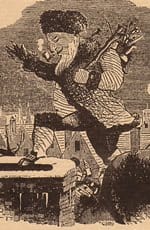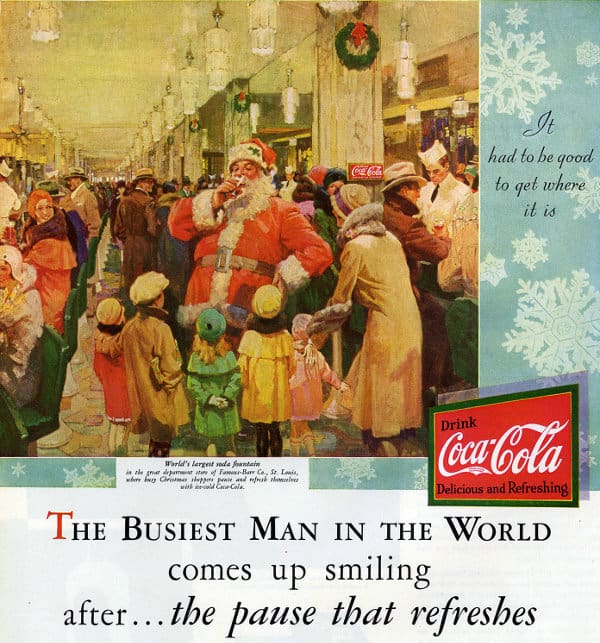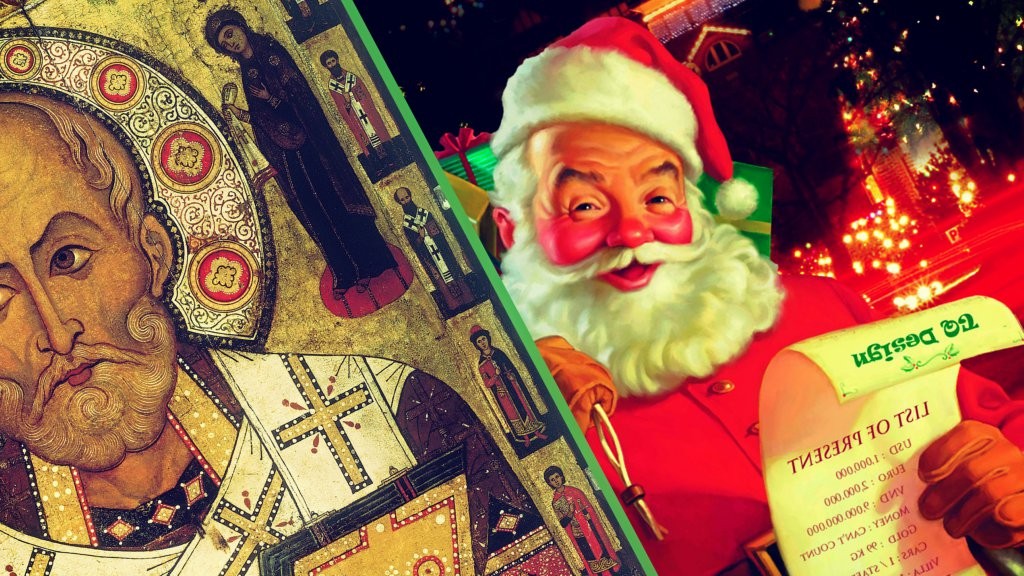Santa Claus has nothing to do with the celebration of the birth of Jesus Christ; neither was he the child’s uncle nor did he bring him gifts on the day of his birth; those were brought to him by the Three Wise Men. Santa Claus is a modern invention.
History and Origin of Santa Claus, Papa Noah, Saint Nicholas
This white-bearded, red-robed old man, also known as Santa Claus, St. Nicholas, or simply Santa Claus, was a well-known saint by the name of St. Nicholas of Bari, but his name came from the German saint St. Nikolaus.
He is believed to have died on December 6, 345, a date that was changed due to the proximity of Christmas. Also, who was this man who gave toys to children on Christmas Eve? It was written by St. Methodius, Archbishop of Constantinople, according to his biography and contains the following intriguing information.
He was born in Lycia, Turkey, to very wealthy parents
From an early age, he was known for giving everything he had to the needy. It would be a sin not to distribute much because God has given us so much, he used to tell his parents.
He was ordained a priest by his bishop uncle, a relative. He inherited a large fortune after his parents died while caring for the sick during an epidemic. He then donated his fortune to the underprivileged and entered a monastery as a monk.
When he returned from his desire to travel to the Holy Land, where Jesus was born and died, he arrived in the Turkish city of Mira, where priests and bishops were debating who should be chosen to succeed the deceased bishop in the city’s temple.
“We will choose the next priest to enter the temple,” they finally said. And at that precise moment, Nicholas unknowingly entered and was unanimously elected bishop.
In the East, they call him Nicholas of Mira
For the Italian city where he served as a bishop, but in the West, he is known as Nicholas of Bari because, during the Muslim invasion of Turkey, a group of Catholics smuggled the relics of the saint to Bari (Italy).
By praying to this great saint in that city, such beautiful miracles were achieved and his cult quickly spread throughout Europe. He is venerated as a patron saint in Turkey, Greece and Russia. Already in 550, his temple was erected in Rome.
Patron Saint of Sailors
He is invoked in times of danger, shipwrecks, fires and economic problems. Through his intercession, people received admirable favors.
“God, save us through the prayers of our good Bishop Nicholas,” cried some sailors caught in a terrible storm at sea. The saint appeared above the ship at that very moment, blessed the calming sea and disappeared without a trace.
This saint was known for the numerous miracles granted to him by God. The reason he was depicted with children is that, according to legend, a criminal wounded several small children with a knife and the Saint prayed for them and achieved their immediate recovery.
In addition, they painted a young girl next to him because in his town there was an old man with three daughters who were so poor that he could not marry them off. The old man was able to marry off his daughters very well because the Saint threw him out of the window a bag of gold coins every night for three days in a row.
Sinterklaas
In the local folklore of Holland, the man with the white beard was also a revered and significant figure. He was a saint named Sinterklaas and his feast day was celebrated in Holland between December 5 and 6.
Dutch immigrants introduced this tradition to the United States in the mid-17th century. Thanks to the writer Washington Irving, who included him as a character in his satire History of New York in 1809, the name Sinterklaas was changed to Santa Claus.
The name already existed; the appearance was missing.
Thomas Nast
A German immigrant, Thomas Nast contributed significantly to the common depiction of St. Nicholas in the 19th century. He was born in Landau (Germany) in 1840. From an early age, he lived with his family in New York, where he became known as a cartoonist and journalist.
Nast published his first illustration of Santa Claus in Harper’s Weekly in 1863. Until then, the iconography had changed frequently, varying from depictions of a short, stocky little man to a tall, burly old man.

In Nast’s drawing, he saw a figure that resembled a gnome just as he was about to enter a chimney.
Santa’s appearance underwent a major transformation as a result of his drawings in the following years (he continued to draw them for the same newspaper until 1886). He grew taller, developed a very pronounced belly and a very wide jaw and surrounded himself with ornaments such as a wide belt, fir, mistletoe and holly.
Although he was often depicted as a traveler from the North Pole, he was made even more approachable and endearing by his willingness to accept household chores and his endearing conversations with parents and children.
Nast painted his coat a deep red when industrial reproduction techniques made it possible to include color in drawings published in print.
Santa Claus and red attire
It is not known whether he or Boston printer Louis Prang did it first, since the latter published Christmas cards featuring Santa Claus in his characteristic red attire as early as 1886.
The popularity of this character increased thanks to the possibility of producing greeting cards in large print runs and many stores and companies began to use him in their advertising.
It even became customary for adults to dress up as him during the Christmas holidays to hand out gifts to children and promote various products. Between 1873 and 1940, the children’s magazine San Nicolás was published and had a large readership.
The 1930 Christmas advertising campaign of the Coca-Cola beverage company marked the last significant turning point in the iconographic development of Santa Claus.

The company ran a poster featuring Santa Claus responding to children’s requests in a shopping mall to promote its holiday campaign.
Despite the campaign’s success, company executives asked Swedish-born Chicago-based painter Habdon Sundblom to redesign Nast’s, Santa Claus.
The artist transformed retired salesman Lou Prentice, who served as his first model so that he lost his gnome-like appearance and gained realism.
Santa Claus grew taller and heavier
He had a friendly smile and kind eyes and wore red clothes with white trim, the official Coca-Cola colors. In the 1931 Coca-Cola ad, the character triumphantly debuted his new look and the painter continued to add touches.
His children and grandchildren served as models for the children who appeared in the paintings and postcards and he soon used himself as a model for the character.
Every Coca-Cola Christmas campaign in the world included reproductions of Sundblom’s drawings and paintings from 1931 to 1966 and even after the artist died in 1976, his work continued to be widely used.
Santa Claus is the most recognizable and well-known of all the characters descended from St. Nicholas of Bari, revered as a traditional protector of children since the fourth century, thanks to American postcards, stories, comics, movies and other media. He is also the most secular and commercial.
Santa Claus is very important at this time of year
His image reminds us that it is possible to do good and that it is never too late to help those in need, most of whom are children, even if it has nothing to do with the birth of Jesus Christ.
Why not thank Santa Claus for the gifts you received as a child, the ones you continue to receive? Every Christmas now has that innocent charm and nostalgic flavor thanks to this man, fat or not, bearded or not.
Letters to Santa Claus
Children write letters to Santa Claus a few weeks before Christmas. Especially if the child is not going to spend Christmas Day at home, but, for example, at grandma’s house, the letter includes a list of the toys they would like to receive, as well as some information about the children and their address.
In this way, Santa Claus will always know where to leave the presents. The letter is placed in a mailbox or left in a prominent place in the house for Santa’s reindeer to find, depending on the family.
In any shopping mall, there will be Santa’s helpers on display. They love to have their pictures taken with the children dressed as Santa Claus. From time to time, children give Santa’s helper their wish list.
Throughout the day, Christmas carols are played in the shopping malls, which are also decorated for the occasion.
Related post





